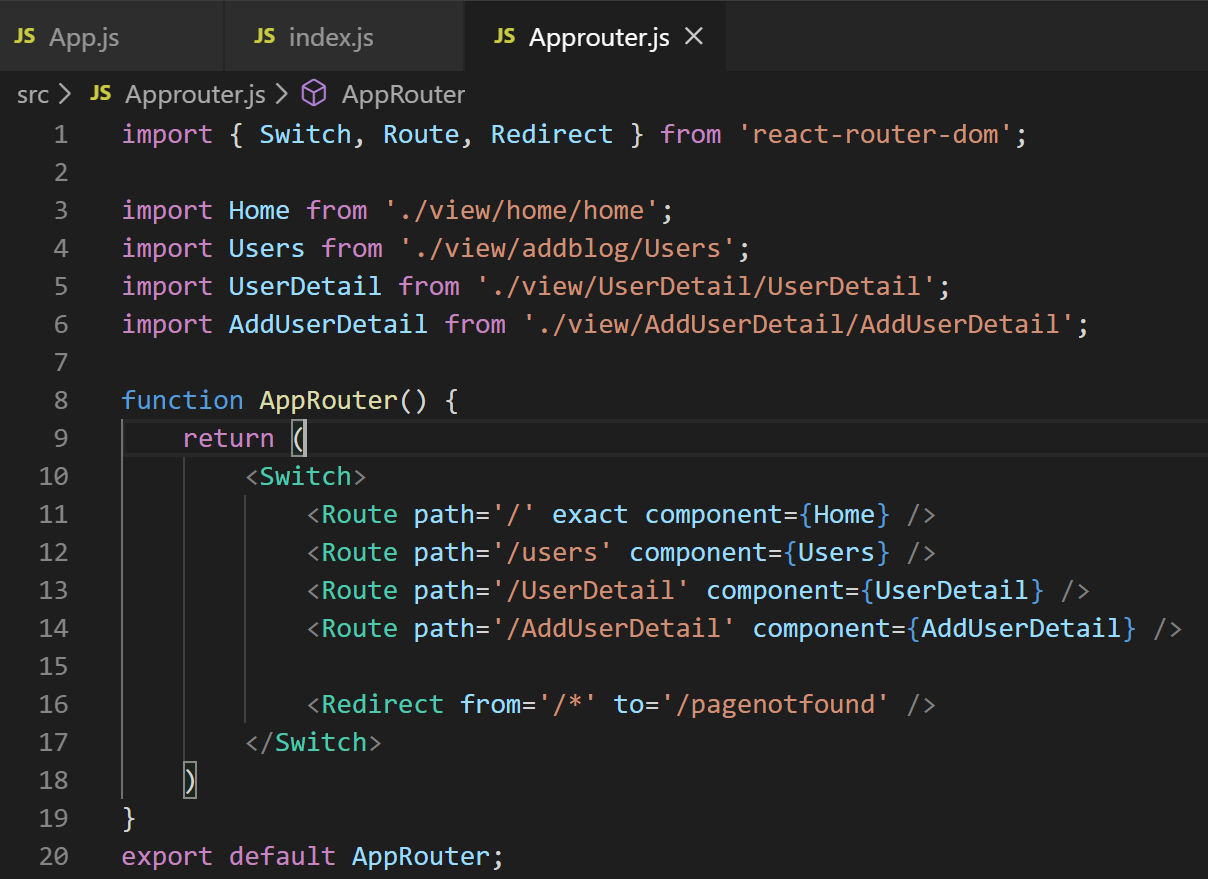
Then we need to pass in our configuration. The first argument is the path to attempt to parse, it will be what you would see in the URL like /profile/1. Well first import matchPath, this is the mechanism that react-router uses to match paths via the Route component. In this article, we use because the next tutorial we process data from the server. Now we need to setup our profile matcher. After doing that, then React-Router-6 will find the better option to route it. If you have routes with descendant route, what defined in other components, use a trailing in their path to indicate they match deeply. To use a router ( ), make sure it’s rendered at the root of your element hierarchy. exact doesn't necessary, and an order from routes doesn't matter anymore.

This will match any route that starts with /whale and it will save the variable information inside a parameter variable called type. My suggestion is to use the because most of the applications you create are dynamic. React Router will use the parameter as a wildcard and will match any route that contains that pattern. Conversely, if we create a web that uses dynamic data with a backend server, then using BrowserRouter is the right choice. history can be modified via pushState and replaceState.įor Example, if we create a static web or there is no server to render dynamic data, we should use HashRouter.
#React router dom exact code

Some react-router components that are most often used to create website page flow include: React Router Dom Component Router componentsīasically, react-router-dom has 2 types of routers used, namely and Both have their advantages depending on what type of Web we are building.
#React router dom exact install
To install react-router-dom, it’s easy enough, type the following NPM install command.Īfter a successful installation, you can use router components to manage the path of the react app. React Router runs anywhere React runs on the web, on the server with node.js, and on React Native. After installing react-router-dom, add its components to your React application. React Router is a package for routing in React.js, as the documentation said 'React Router is a fully-featured client and server-side routing library for React, a JavaScript library for building user interfaces. Step 2: To install the React Router use the following command: npm install -save react-router-dom. We need to add a new prop called activeClassName to the NavLink component so that it applies that class whenever the route it is active. In our routing app, we have three routes which are home, /users, /contact Let’s style them using NavLink.
#React router dom exact how to
3.1 How to create a protected route in reactJS Follow the steps given below to install Router in your React application: Step 1: cd into your project directory i.e geeks. But NavLink is used to add the style attributes to the active routes.


 0 kommentar(er)
0 kommentar(er)
